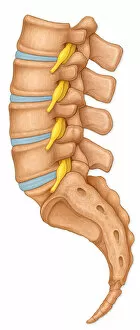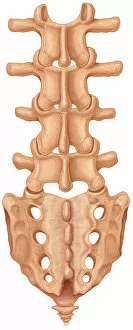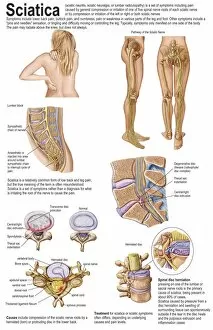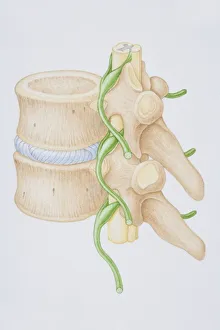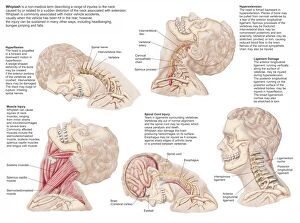Spinous Process Collection
Exploring the complex anatomy of the spine: The spinous process, a bony projection on the back of each vertebra
All Professionally Made to Order for Quick Shipping
Exploring the complex anatomy of the spine: The spinous process, a bony projection on the back of each vertebra, plays a crucial role in supporting the vertebral column and protecting the spinal cord. In this image (Anatomy of human vertebra), you can see the normal lateral view of lumbar vertebrae, highlighting the spinous processes. The posterior view of the lumbar spine and sacrum (Normal posterior view of the lumbar spine and sacrum) further illustrates their alignment. Sometimes, conditions like herniated discs or bone spurs can compress the nearby spinal nerve roots, leading to symptoms such as sciatica (Medical chart showing the signs and symptoms of sciatica). This condition can cause radiating pain, numbness, or weakness in the legs. The delicate balance of the spinal column is evident when considering injuries like those caused by whiplash (Medical chart showing the range of injuries to the human neck caused by whiplash). Even minor trauma can result in damage to the vertebrae or spinal nerves, affecting mobility and overall health. This intricate system of bones, nerves, and tissue is essential for maintaining our ability to move, feel, and live. Understanding the anatomy of the spine, including the role of the spinous process, is key to appreciating its importance and the potential consequences of injury or disease.

